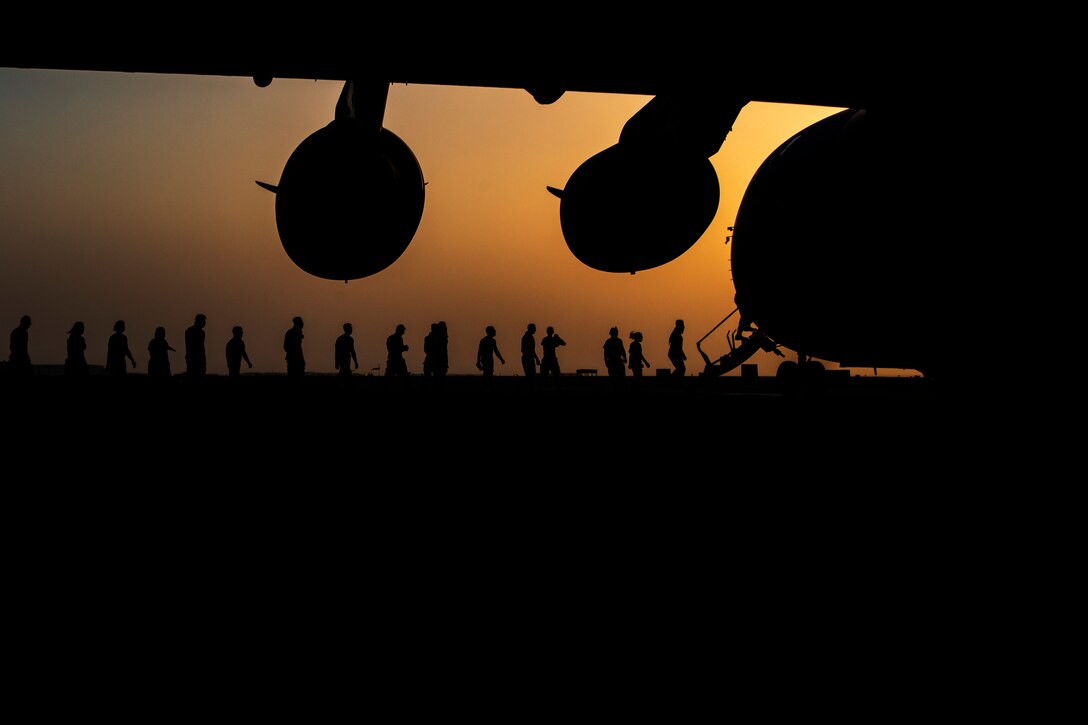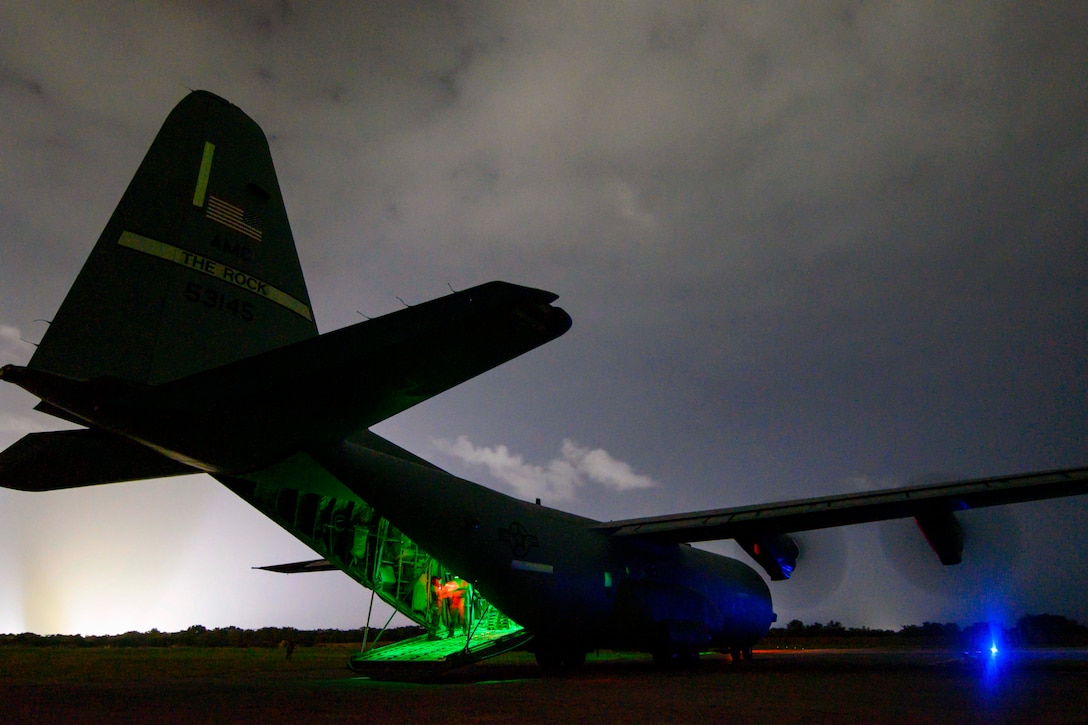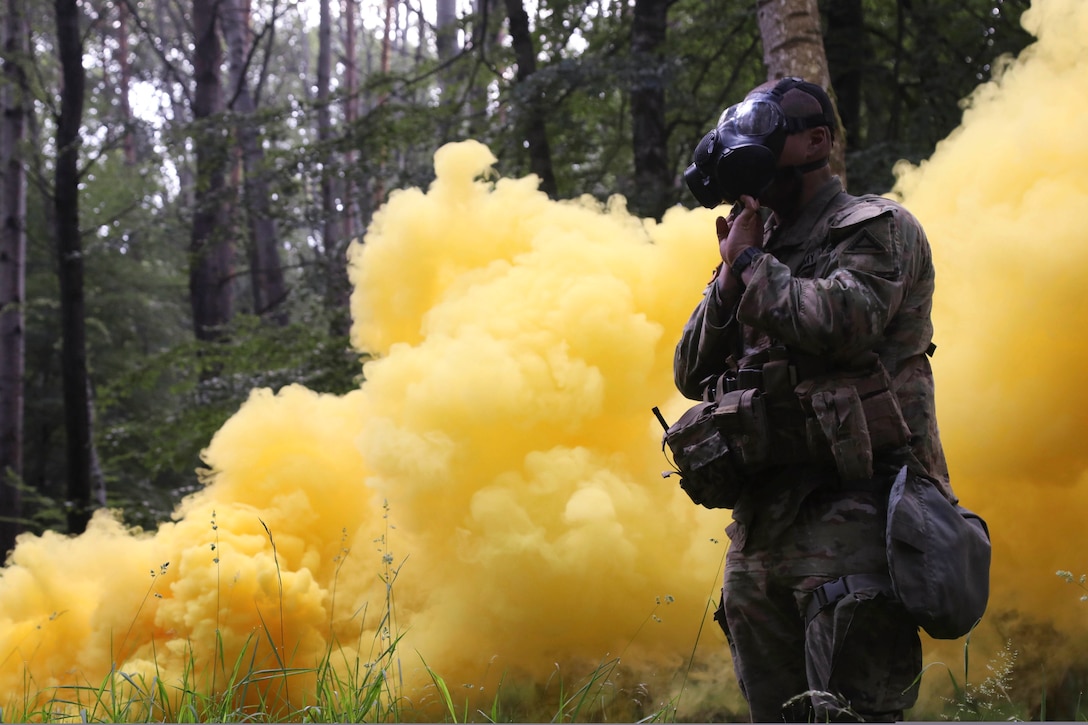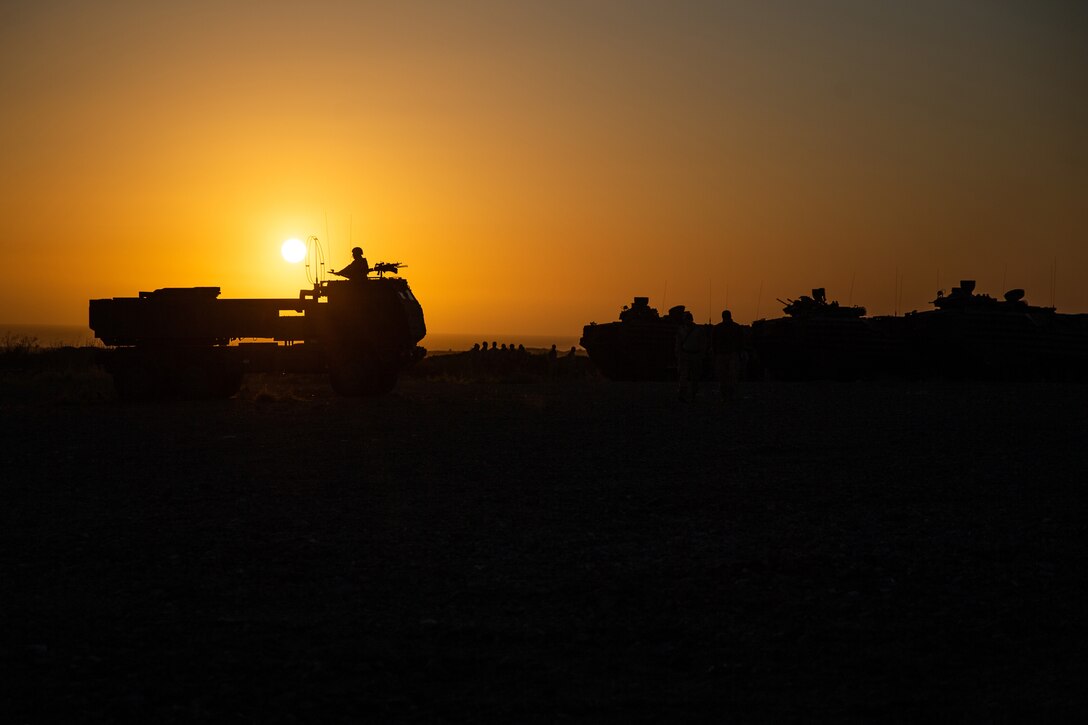U.S. airmen and Canadian soldiers prepare to board a C-17 Globemaster III during aerial medical evacuation training at Ali Al Salem Air Base, Kuwait, June 17, 2020.
Thursday, June 18, 2020
Green Ops
An Air Force C-130J Super Hercules waits for passengers to board during loading and unloading operations in Kenya, June 15, 2020.
Smoky Scene
A soldier participates in the Noncommissioned Officer of the Year and Soldier of the Year Competition at the Joint Multinational Readiness Center in Hohenfels, Germany, June 17, 2020.
Rocket Ready
Marines conduct simulated fire missions with an M142 High Mobility Artillery Rocket System during an exercise at San Clemente Island, Calif., May 2, 2020. The rocket system, which is intended to engage and destroy artillery, air defense concentrations, light armor and fortified stationary targets, is capable of firing GPS-guided munitions.
Guard Faces Pivotal Time, Nominee Says
''We've placed complex dynamic missions overseas and here at home,'' Army Lt. Gen. Daniel R. Hokanson said at today's confirmation hearing. ''The next chief of the National Guard Bureau must continue to effectively navigate this unprecedented landscape and work closely with stakeholders at the international, federal, state and local levels.''
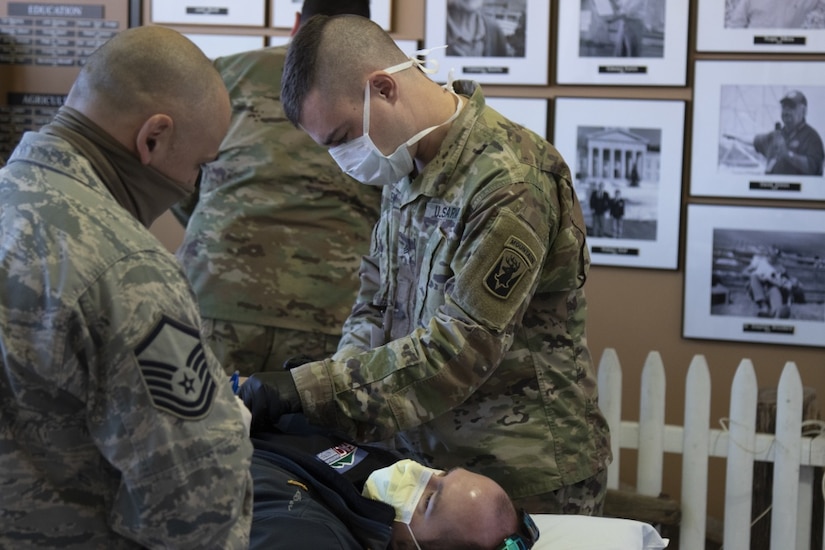
If confirmed by the Senate, Hokanson will be promoted to the rank of general to head up the bureau, where he is now vice chief.
If he is confirmed, he told the Senate panel, he will work with the committee to ensure the National Guard is manned, trained, equipped and ready, whenever and wherever it's needed.
In recent months, the National Guard has been on the front lines of the COVID-19 pandemic response in every state, territory and the District of Columbia, where guard members are helping communities fight the invisible enemy.
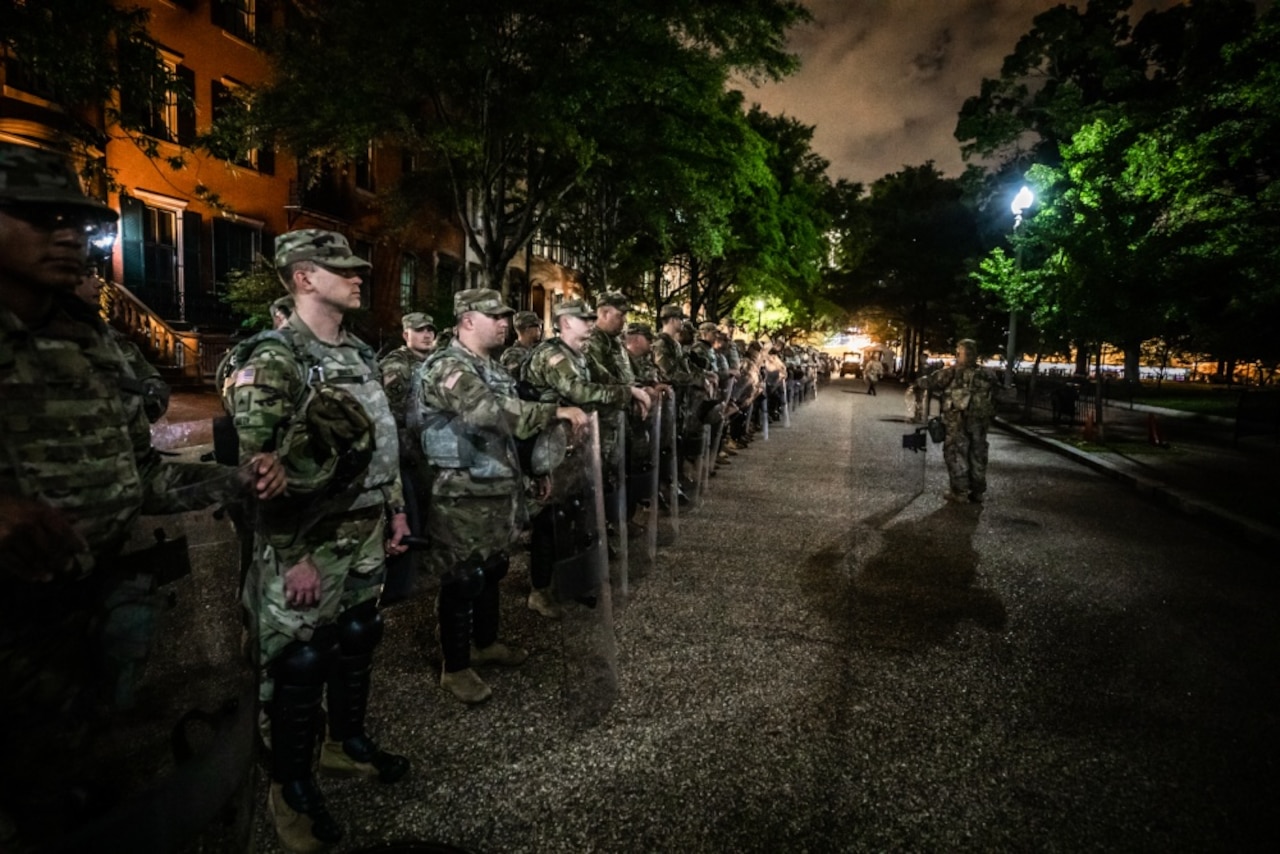
''[Guard members] are supporting key functions in their communities [for] testing sites, long-term care facilities, hospitals and food banks. We have delivered personal protective equipment, sewn face masks, turned convention centers into alternate-care facilities and so much more,'' Hokanson said.
The National Guard also has responded to civil unrest in several states and Washington, D.C., as part of a national call for justice and racial equality, he said. ''Our soldiers and airmen were there to protect our First Amendment rights and preserve public safety in the communities where we live,'' the general added.
The citizen-soldiers and -airmen responded to those events and others in the homeland while simultaneously meeting all overseas deployment requirements to support combatant commands and the National Defense Strategy, Hokanson noted.
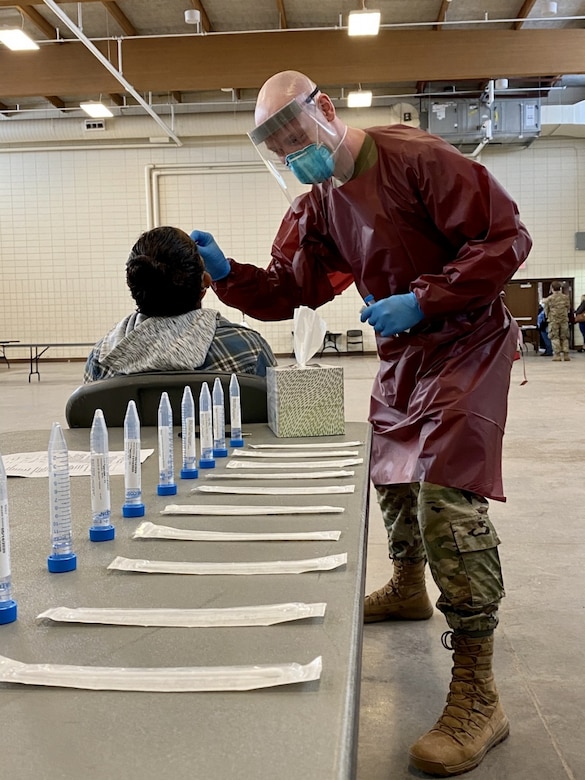
''As a result, we reached a new peak earlier this month of over 120,000 citizen-soldiers and -airmen mobilized worldwide. What makes this possible has not changed since the founding of our National Guard in 1636,'' he told committee members.
Hokanson called National Guardsmen and women ''incredible.''
''They have [been] and will always be my highest priority,'' he said. ''They balance their military careers, civilian careers, their families and all the sacrifices they must make so we can live true to our motto, 'Always Ready, Always There.'''
Marines Deploy to Norway for Exercise Amid COVID-19 Pandemic
Whether in the face of the enemy or a deadly global pandemic, the Marine Corps not only stays ahead of the curve, but also flattens it.
World War I showed the world the destruction and devastation that a man could do to another man, but the deaths caused by man paled in comparison to the destructive force that a simple virus can bring to the table. The 1918 Spanish Influenza pandemic, which is known as one of the world's deadliest pandemics, affected about a third of the world's population at the time, and it resulted in the deaths of millions due, in part, to countries not following proper health protocols.
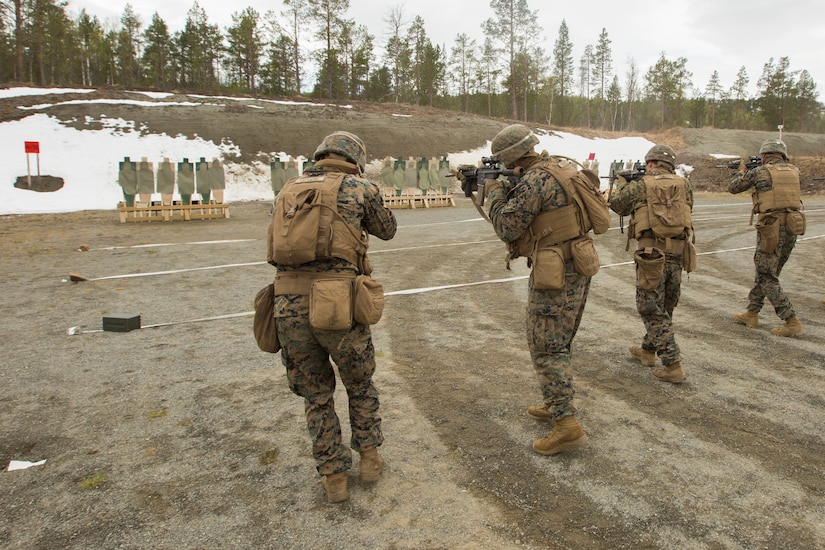
A century later, the Marine Corps has learned from the past, and the Marines and sailors with 3rd Battalion, 2nd Marine Regiment, 2nd Marine Division, 2nd Marine Expeditionary Force deployed to Norway in May as part of Marine Rotational Force Europe 20.2, Marine Forces Europe and Africa, which focuses on cold-weather and mountain-warfare training and military-to military engagements to enhance interoperability with allies and partners.
"COVID-19 was certainly a challenge to readiness," said Marine Corps Lt. Col. Brian Donlon, the battalion commander of MRF-E. "It imposed conditions on the battalion's ability to train that were new and challenging, but COVID did not erase the requirement to be ready to deploy, to be expeditionary, and be prepared to execute our mission-essential tasks."
During the deployment process, the battalion mandated strict social distancing, hygiene protocol and mask donning, and Navy corpsmen continuously screened Marines and sailors for any symptoms of the virus. Once in Norway, a 14-day quarantine was executed.
"We treated quarantine a lot like being on ship, and when we were in quarantine, we did our prep for combat in the limited spaces available to us, and we created a battle rhythm that was essentially shipboard living," Donlon added.
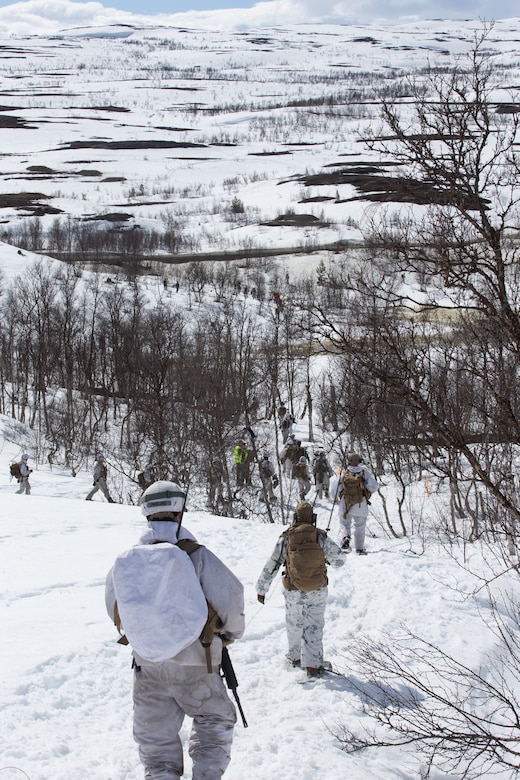
After a successful 14-day quarantine where the battalion saw zero COVID-19 cases, the Marines and sailors immediately transitioned into the annual interoperability exercise, Thunder Reindeer, located inside the Arctic Circle. The exercise included opportunities to practice live-fire and combined arms training, as well as air integration.
On the ground, the Marines found themselves setting up camp in snowy, rocky terrain, much different from the humid, swampland they were used to at their home station in North Carolina. In the morning, the Marines tactically integrated with the Norwegians to provide support by fire.
Marine scout snipers maneuvered through forests across mountainous terrain to practice stealthy link up procedures with their Norwegian counterparts without giving away their position.
"This shows the flexibility of each country and our ability to quickly integrate after coming out of quarantine," said Marine Corps Sgt. Stephen Michaels, a scout sniper.
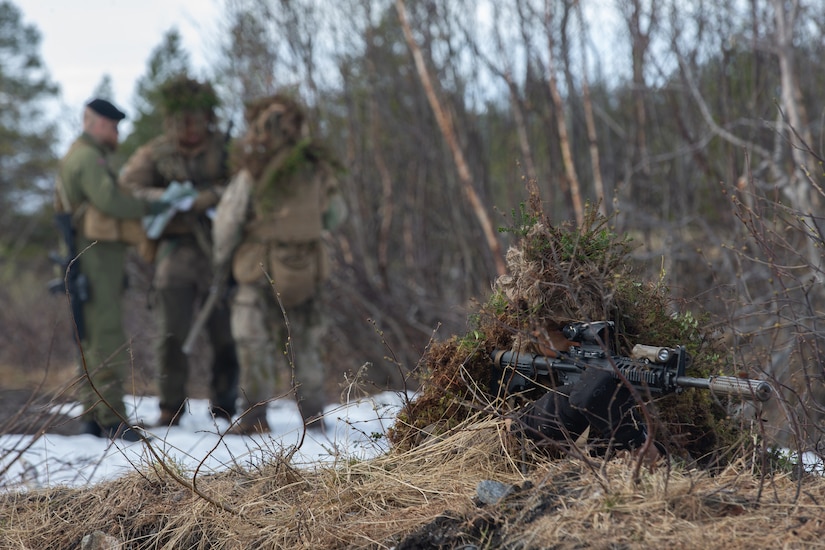
Marines also integrated with a Norwegian artillery battalion and learned how their NATO counterpart conducts a call for fire. The Norwegians were able to integrate air, land, and naval assets, including F-35 fighter jets, in a joint setting at the battalion level for the first time.
The Norwegian government announced its support for purchasing F-35s in 2008, and the first round of jets became operational in late 2019. According to Norway's chief of defense, bringing the capability to communicate with the jets is still a work in progress for the different Norwegian army, navy and air force units.
During Thunder Reindeer, the Marines stepped in to assist with the progress by simulating air support in conjunction with Norway's 2nd Army Battalion and Marine forward air controllers.
While out in northern Norway's arctic climate and mountainous terrain, contact with participating F-35 jets was reached, a milestone previously unattained by the 2nd Battalion. As a result, troops on the ground received the simulated support needed.
"It's a personal feat for the Norwegians as they continue to progress with that sort of technology and being able to use them not only as air assets, but air-to-ground," said Marine Corps Capt. Sage Santangelo, a Marine forward air controller.
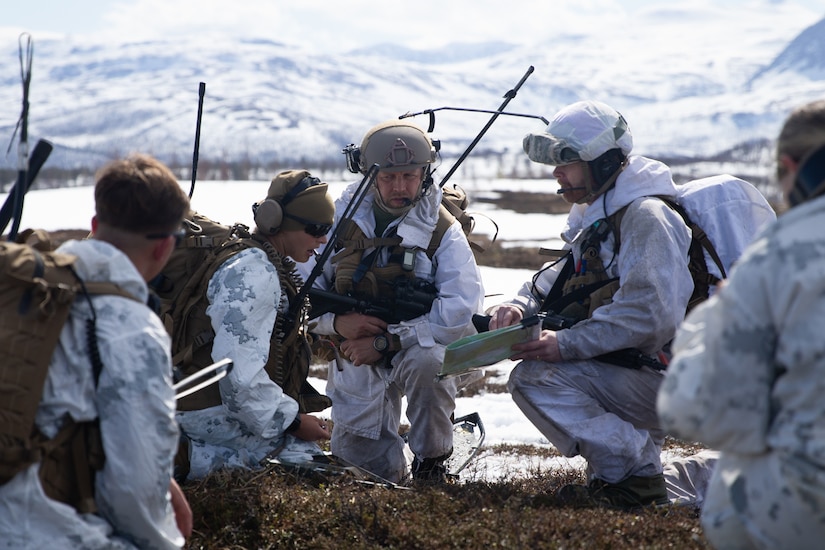
Lt. Col. Erling Nervik, the commander of Norway's 2nd Battalion, said making contact and having air support was an important asset to bring into the training and that he was very satisfied with his experience with the Marines.
"We are in many ways like-minded, and we have been good allies for many years and working together with the USMC is always a pleasure," Nervik said. "After being at Quantico in America for a year at the Command and Staff College, I know the Marines — know the attitude, the mentality. I'm looking forward to the cooperation between two good allies."
The Marines are expected to operate in Norway until the fall, and they and the Norwegians plan to hold various exercises during that time for continued interoperability and arctic training.
(Marine Corps Lance Cpl. Chase Drayer is assigned to Marine Corps Forces Europe and Africa.)
Deployed Airmen Find Hope, Resilience Through Wingmen
As COVID-19 continued to affect deployments around the world, airmen downrange found hope in their wingmen and showed true resilience when challenges were thrown their way.
Due to the unforeseen mission impacts due to COVID-19, the 729th Air Control Squadron at Hill Air Force Base, Utah, was unable to replace members of the 726th Air Control Squadron on time. This pushed back the 726th ACS airmen's redeployment to their home station at Mountain Home Air Force Base, Idaho, by almost a month.
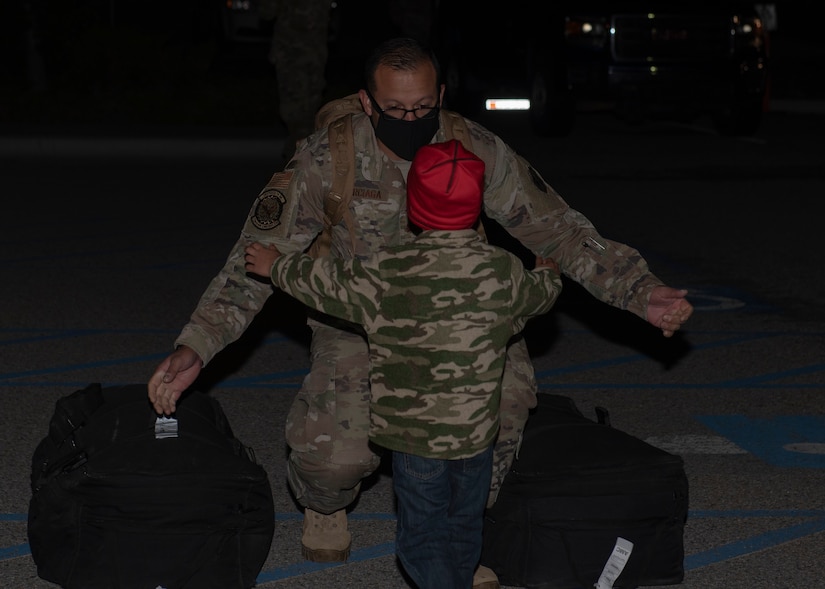
As COVID-19 began to ramp up, Air Force Airman 1st Class Barbara Miller, a surveillance technician with the 726th ACS, knew her homecoming would not be the same.
''During month seven, we still didn't know when we were coming home,'' said Miller, a first-time deployer. ''Our leadership was transparent, and they were doing what they could to get us back.''
Despite their best efforts, the delay was still disheartening to many. But Miller said she found ways to stay positive and keep pushing forward.
''We got to work with our coalition partners and the Marines,'' she said. ''I couldn't have asked for a better support system; they make the job easier. We knew there would be a light at the end of the tunnel somewhere.''
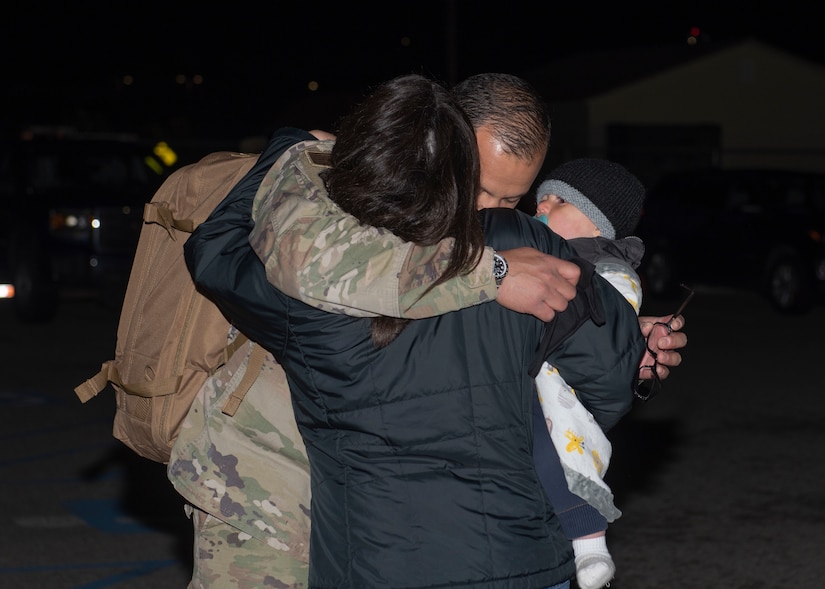
Positivity in the midst of hardship can be difficult, but as it took root in the squadron, people began to notice, including Air Force Lt. Col. Richard Barber, 726th ACS commander.
''There were many mental and physical challenges that they had to go through with this deployment,'' Barber said. ''These airmen adapted so well with the changes that were thrown their way.''
The airmen came together during their time of uncertainty, and so did their families back home.
''We definitely saw a mutually beneficial camaraderie with families and spouses of the deployed airmen,'' Barber said. ''They were hosting virtual coffee hours or virtual trivia nights to break away from the monotony and maintain a social life while physically distancing.''
Airmen and their families proved to be prioritizing their mental health during trying times, Barber said. ''Thankfully, that keeps their minds sharp so they can take care of each other and the mission,'' he added.
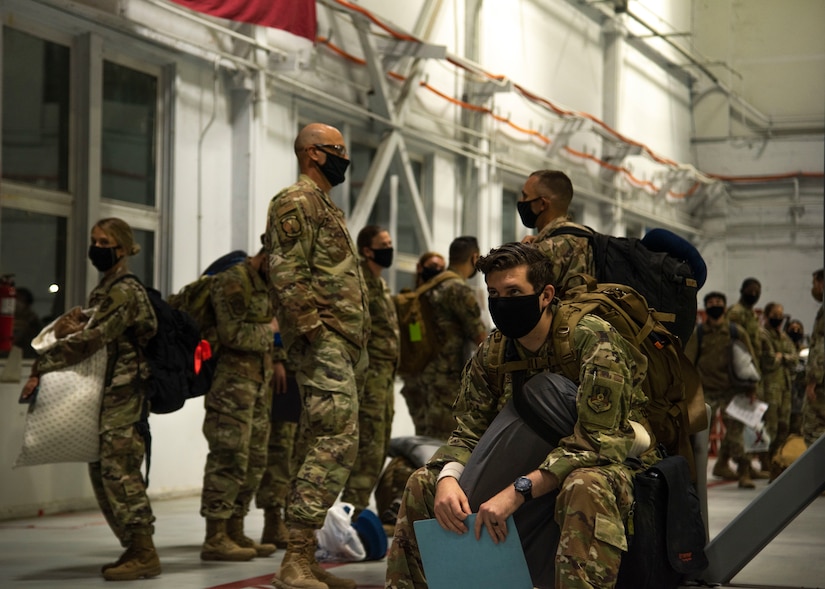
''The airmen that deploy from the 726th ACS and all the ACSs from across the Air Force are the theater air control for the entire theater,'' Barber said. ''They have a large weight of responsibility, and their ability to be resilient with the changes and the daily missions was incredible.''
The airmen of the 726th Air Control Squadron were faced with the uncertainty of the current times and met it with resilience and camaraderie. ''It was a crazy, eye-opening and exciting seven months,'' Miller said. ''I learned a lot about myself and my job, and I would do it all over again.''
(Air Force Airman Natalie Rubenak is assigned to the 366th Fighter Wing.)
Indiana National Guard Medics Maintain Readiness Amid COVID-19
Indiana National Guardsmen have been serving Hoosier citizens throughout the COVID-19 response. Despite rigorous missions across the state, these guardsmen continued to maintain combat readiness by practicing combat-related medical care.
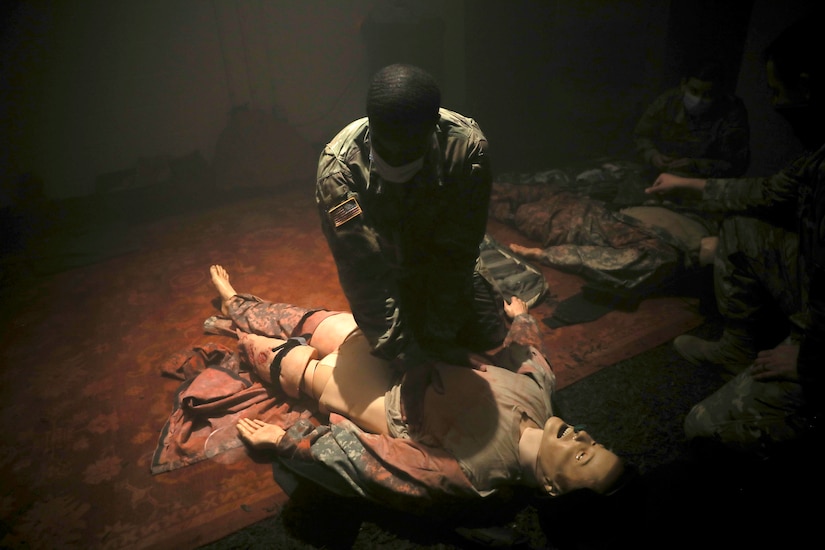
"Training and rehearsals facilitate an efficient, robust and reproducible delivery of services," said Army 1st Sgt. Ryan A. Richmond, the medical branch noncommissioned officer in charge of the Indiana Medical Detachment. "Empowered health care professionals are force multipliers, and they have consistently shown how they are able to turn theory into practice with tailored training over accelerated timelines without losing quality of instruction and patient care."
Between tasks in assisting the community through various missions, the guardsmen completed training on combat-related care at the Medical Simulation Training Center at Camp Atterbury, Indiana. The advanced training facility is one of 22 MSTC sites in the world.
Training began in a lecture format, followed by IV practice. Finally, medics ran through a realistic, hands-on medical training in a combat scenario using cutting-edge patient simulators. Instructors remotely controlled the simulators to display symptoms that included blinking, breathing, increasing or decreasing heart rate, bleeding and more.
The patient simulators were placed in a low-lit room filled with smoke, flashing lights and loud noises to simulate a combat environment. This tested the medics' knowledge and ability to administer care in the battlefield while learning and developing muscle memory.
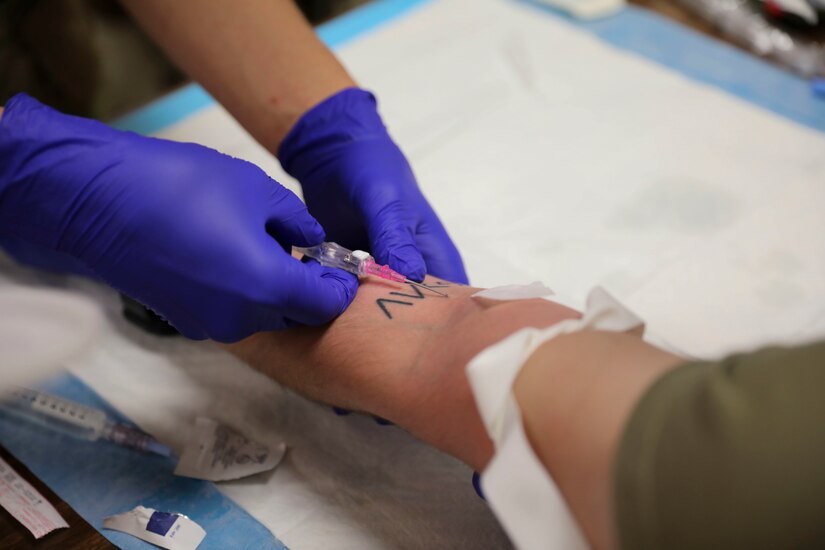
Having high-quality equipment and experienced trainers provided guardsmen the opportunity to increase combat readiness through intensive, realistic training that many leaders hope to continue for guardsmen serving in a traditional status.
The guardsmen also participated in other training, such as running through a litter course, loading and unloading patients on military vehicles, search and rescue training in a rubble pile, suturing practice on pig skin and learning how to provide medical care while in a helicopter.
When the guardsmen weren't training, they served to accomplish their designated COVID-19 response missions. These guardsmen helped thousands of Hoosiers at mobile testing centers across the state while providing relief to multiple civilian agencies and organizations.
"Serving during this pandemic has changed the way people look at how we are serving and has forced us to be flexible and tactical in everything we do," said Army Capt. Jessica Philbin, the medical operations officer for the 219th Engineer Brigade. "It is critical as citizen-soldiers and citizen-airmen to be able to come together in an unfortunate situation to help Hoosiers. We are here fighting the pandemic all together, but we are also able to get some training experience out of it as well."
The training also provided an outlet to relieve stress from working on the frontlines of the COVID-19 pandemic and an opportunity to build relationships across branches. While the operational tempo was rigorous during the statewide response, these guardsmen were proud to be serving their communities while developing themselves as medics, soldiers and airmen.
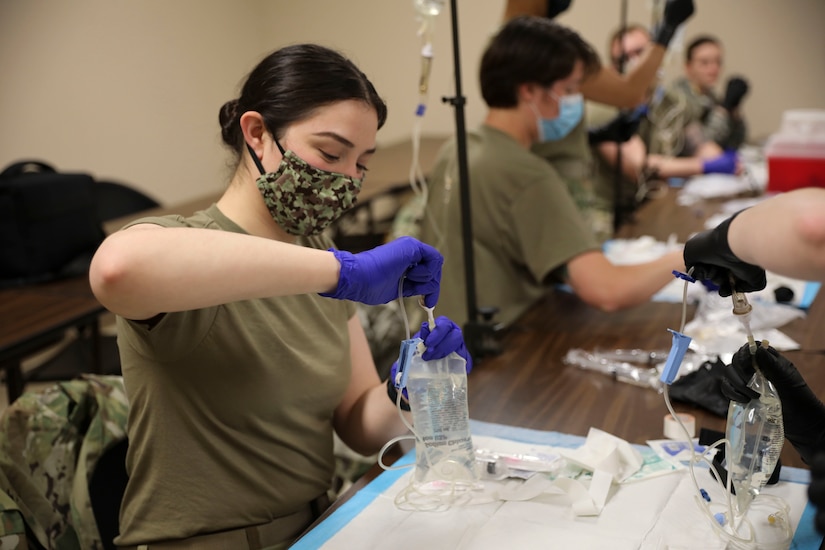
"These are two different types of scenarios," said Army Cpl. Kaley Beckham, a medic with the 738th Area Medical Support Company. "Working with this pandemic is definitely not the same as this training, but they are equally as important. I hope that I have the opportunity to do this training again."
Their effectiveness in accomplishing missions while simultaneously honing their combat-care skills, speaks to the Indiana National Guard's overall commitment to the readiness to fight any enemy — foreign or domestic — that may threaten the state or nation.
"Our health care professionals within the Indiana National Guard are catalysts in the delivery of care while assigned to missions during the state response," Richmond said. "Ensuring each and every one of them have the fundamental knowledge, skills and most up-to-date information facilitates mission readiness, their safety and their success."
(Army Cpl. Hannah Clifton is assigned to the Indiana National Guard.)
